Katherine Selby
Director of the School of Natural Sciences; Senior Lecturer in Quaternary Science and Physical Geography
Visit Katherine Selby's profile on the York Research Database to:
- See a full list of publications
- Browse activities and projects
- Explore connections, collaborators, related work and more
Profile
Biography
Katherine joined the Department of Environment and Geography in 2007, moving from the School of Geography at the University of Southampton. She undertook her PhD at Coventry University investigating Late Quaternary sea-level changes on the Isle of Skye, Scotland and post-doctoral research at the University of Exeter examining lacustrine environments in central Ireland. Since then she has also held a lectureship at Bournemouth University. Katherine was Deputy Head of the Department of Environment and Geography from 2015-2018 and Deputy Director of the School of Natural Sciences from 2018-2020. Katherine is currently the Director of the School of Natural Sciences.
Career
| Director of the School of Natural Sciences | University of York |
| Deputy Director of the School of Natural Sciences | University of York |
| Deputy Head of Department | University of York |
| Senior Lecturer | University of York |
| Lecturer | University of York |
| PhD | Coventry University |
| BSc (Hons) | Manchester University |
Research
Overview
Katherine has three broad research interests. These are:
- Reconstruction of past sea level changes
- Environmental reconstruction of coastal areas and how these may have influenced cultural development
- Palaeoenvironmental reconstruction using pollen and diatom analyses.
Projects
1. The Churchill Barriers: A Large-Scale, Open-Air Marine Laboratory
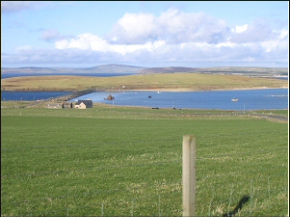
This project examines the effects of the Churchill Barriers (Orkney, Scotland) on all aspects of the physical environment; pollution i.e. eutrophication, ecology and sediment transport pathways. The Churchill Barriers effectively provide an open air laboratory in which to measure recent environmental change, both direct and indirect and, because the date of emplacement of the barriers is known, will overcome the all too common problem of chronology in geologically very young contexts. This area of research will have applications for managed realignment, the creation of artificial lagoons and fish farms, for example, and as such will receive much attention in the coming years.
2. Late Holocene sea level change and mangrove dynamics along the East African coastline
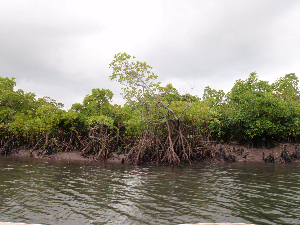
This project investigates past evidence for sea level and coastal changes along the east African coastline. In particular, mangrove areas are utilised as they have a specific relationship with salinity gradients. Sediment cores are extracted in the field and pollen and diatom analyses undertaken. Using this knowledge and the salinity preference of the taxa, sea level changes can be reconstructed.
3. Establishing recent North Amreican relative sea level changes and saltmarsh accretion rates (joint with Dr H. Roe, Queens University, Belfast).
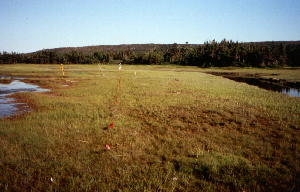
This research seeks to reconstruct sea level change over the past 1000 years using high resolution radiocarbon dating and pollen and foraminiferal analyses. Historical records exist for this area and therefore changes recorded in the pollen records, for example, the decline in horse chestnut, can be compared with this information and independent timelines established. These can then be compared with radiocarbon dates. With this information and by creating age depth models it is possible to state information on the rates of sea level change.
4. Coastal changes and their effects on cultural development and settlement patterns
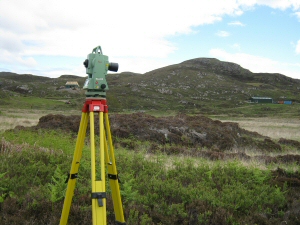
Under this broad theme there are several specific research projects that are ongoing along NW Scotland and in East Africa. The fundamental aim is to examine in an holistic way, changes that have occurred physically and anthropogenically in coastal areas with the objectives are trying to establish drivers of these changes and their interactions.
5. Diatomite; its deposition, degradation and dating potential (joint with Dr Kirsty Penkman, University of York)
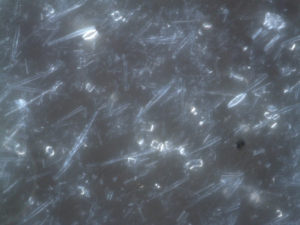
Grants
| 2009-2010 | Research Priming Fund, University of York | P.I. £9964 | Scotland after the ice: environmental and anthropogenic interactions |
| 1999-ongoing | National Aerobiology Unit, Worcester | P.I. £12000 | Prediction of daily pollen levels in Yorkshire |
| 2007-2008 | Research Priming Fund, University of York | P.I. £6096 | Diatoms: deposition, degradation and dating |
| 2007-2008 |
Adventure in Research Grant University of Southampton |
P.I. £29800 |
The Churchill Barriers: An Open-Air Marine Laboratory |
| 2006-2009 |
PhD Studentship |
P.I. £40000 |
The Churchill Barriers: A Large-Scale Open-Air Marine Laboratory |
| 2001-ongoing | Research Palynologist |
£3000 |
Analysis of relative sea level changes and accretion rates from saltmarshes during the last 1000 years on the eastern seaboard of North America. (with Dr H. Roe) |
| 2005 | The Environment Agency | £4500 | An investigation into possible contaminants within Christchurch Harbour |
| 2003 |
NERC |
£825 | Holocene baseline conditions and environmental change of the Culm River, E Devon: Diatoms and fluvial palaeoenvironmental indicators |
| 2003 |
QRA Quaternary Conference Fund |
£170 | |
Supervision
PDRA
2007 – 2008: Dr Erika Sternberg ‘The Churchill Barriers: An Open-Air Marine Laboratory.’
Postgraduate
2008 - present: Paramita Punwong 'Late Holocene sea level change and mangrove dynamics along the East African coastline'
2006 - present: Michelle Robinson (PhD student) ‘The Churchill Barriers: A Large-Scale, Open-Air Marine Laboratory.’
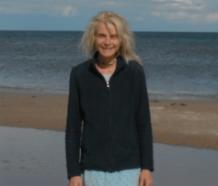
Contact details
Teaching
Undergraduate
- Year 1
- Physical Geography
- Envirnmeontal Geography Research
Postgraduate
- Current Research in Environmental Geography
- Current Research in Environmental Science
- Current Research in Environment, Economics and Ecology.

